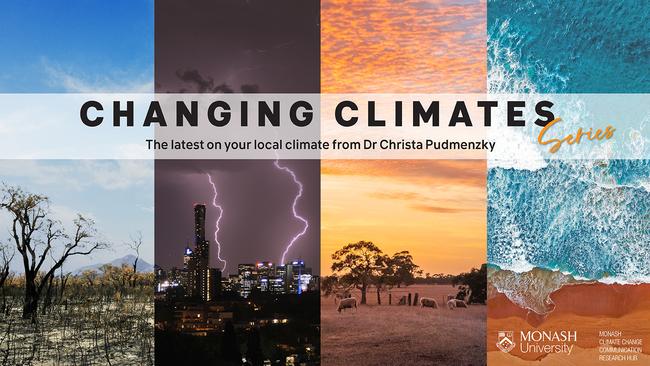Climate change likely to make us cough up more dough for pantry staples
Host of Gladstone's Changing Climates series, Dr Christa Pudmenzky, explores why climate change could push up food prices. Plus, tips on how to minimise its impact on our wallets.

Hyperlocal
Don't miss out on the headlines from Hyperlocal. Followed categories will be added to My News.
If you've recently walked away from the check-out feeling like you've paid an arm and a leg for just a few basic items, your instincts are spot on.
In 2022, supermarket prices rose more than nine per cent, with many pantry staples having their biggest price rise in over a decade.
Much of this increase has been driven by conflict between Russia and Ukraine, in addition to strong consumer demand and the knock-on effects from COVID-19.
However, another factor linked to higher food prices is last year's extreme weather, with flooding across Australia's east coast sending the cost of milk, fruit and veggies skyrocketing.
While scientists are yet to determine exactly how climate change affected recent extreme weather, the increasing frequency and intensity of events like floods, bushfires, and droughts, as well as rising temperatures, are expected to affect food production into the future.
We're already starting to see these types of climate changes, with excessive greenhouse gases from human activities causing temperatures to climb across the country including in Gladstone.
Here, we now experience almost 50 autumn nights above 20C – around 11 more than we did in the early 1970s.

And, with emissions still being pumped into our atmosphere at a rapid rate, higher food costs might be a persistent reality for some as climate change continues to bite.
The vulnerability of our bread and butter
Our farmers aren't strangers to volatile weather.
But, with a strong likelihood of extreme weather on the horizon, there will be further pressure on the already complex process of getting food from farm to table.
Extreme events can impact food prices in various ways, from damaging crops and interrupting supply chains, to reducing long-term farm yields.
They can wreak havoc on crops and livestock, leaving our supermarket shelves close to bare, and the stock that's left at 'luxury prices'.
We've seen this in recent years with the floods in south-east Queensland resulting in $10 lettuces, the Black Summer fires leading to the loss of more than 50,000 livestock, and cyclone Yasi in 2011 sending bananas to $15/kg.
Extreme weather can also disrupt supply chains by disabling road and rail links, and can cause electricity outages.
Disasters like droughts, while equally problematic, often have less of an immediate impact and slowly dry out our pockets over time.
They can gradually reduce farm yields by presenting unfavourable growing conditions, or force farmers to limit crop production and reduce their number of livestock with resources in short supply.
For example, the 2017-19 drought forced farmers to cull cattle they could no longer afford to feed.
Facing pricey pantry staples
Higher food costs affect all of us.
However, marginalised communities including Aboriginal and Torres Strait Islander peoples, asylum seekers, and those from low socio-economic backgrounds are particularly vulnerable.
The Food Hunger Report in 2021 found one in six Aussie adults were severely food insecure and more than a million children were estimated to be living in food insecure households.
And, for around seven per cent of these people, extreme weather disasters were the cause.
So, what can we do to keep our bellies stuffed and our pockets full?
Reducing our personal emissions is a great place to start.
Using greener modes of transport like trains and bikes, switching off lights when they're not needed, or installing solar panels will all help mitigate the effects of climate change in the long term.
But, in the face of rising food costs, there are lots of immediate actions we can take.
These include taking up backyard or balcony gardening or eating seasonal produce that is available in abundance and therefore competitively priced.
Our farmers are also finding innovative ways to adapt by preserving soil moisture when rainfall is low, and keeping residue from previous crops in the soil to minimise erosion.
Thinking more sustainably about our food choices can have the double benefit of driving down emissions and limiting the impact on our wallets.
Let's hear from your community:

Want more information on how your climate is changing? Check out the last article in this series.
Dr Christa Pudmenzky is a climate scientist at the University of Southern Queensland.
This column is part of a collaboration between Monash University and News Corp to deliver hyperlocal weather and climate information.


